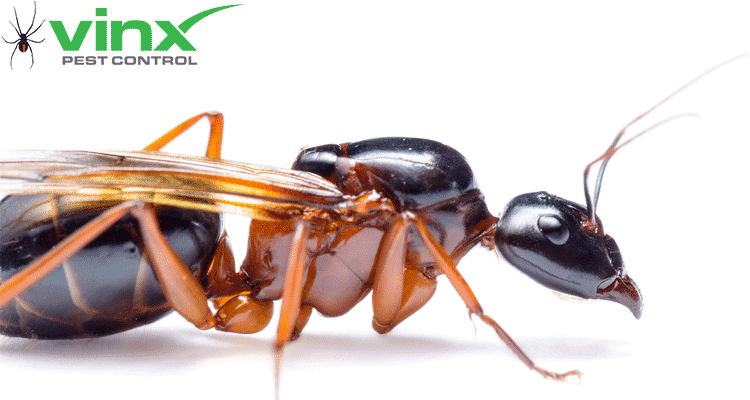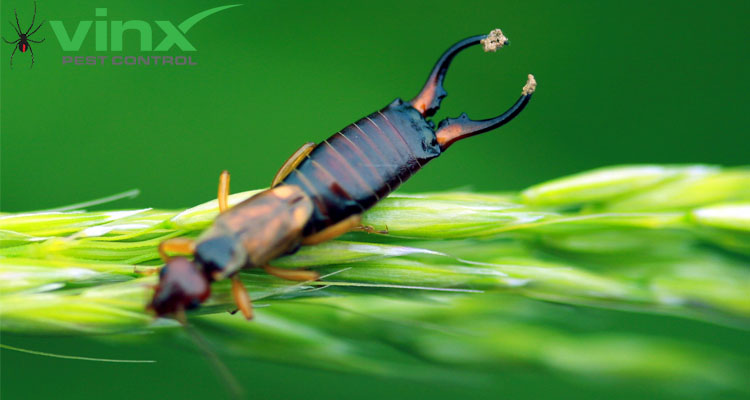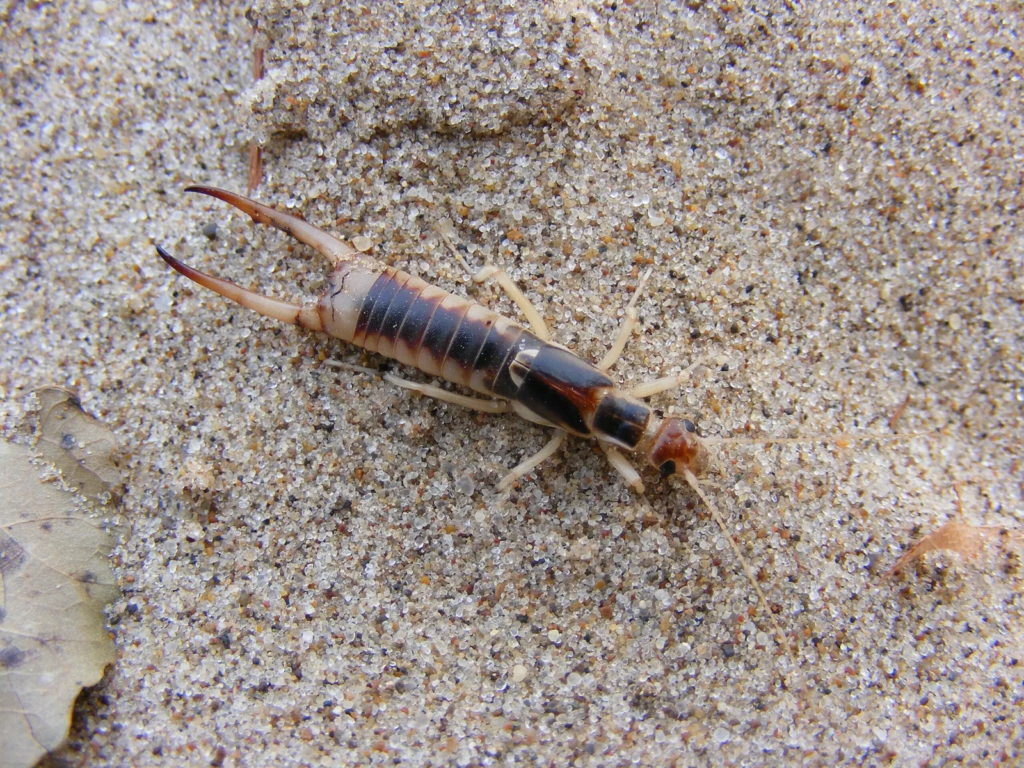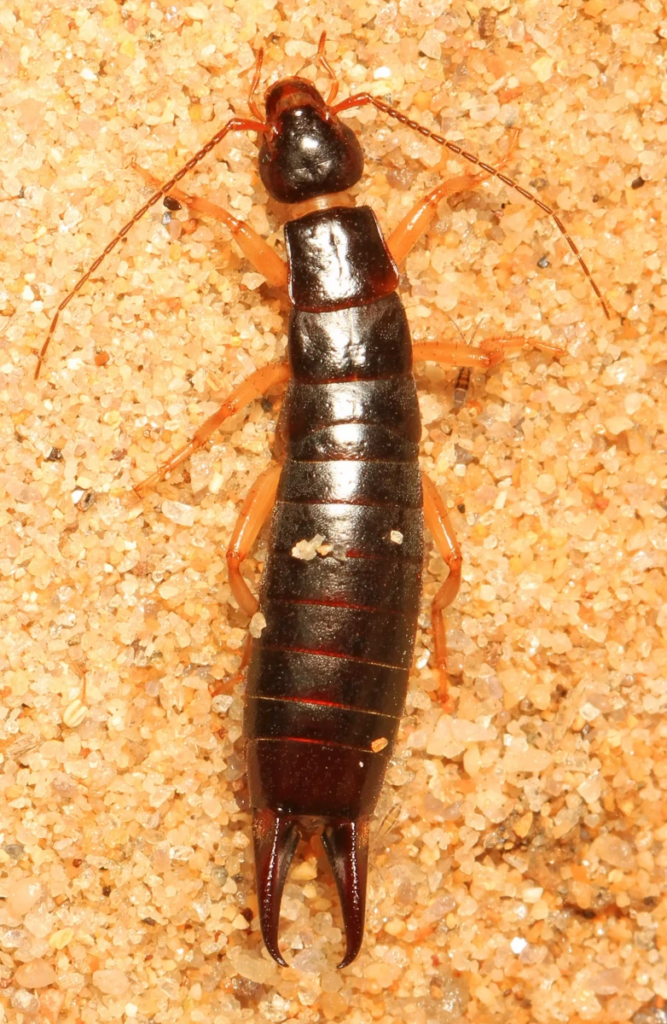Carpenter ants are a significant problem in South Carolina, causing substantial structural damage to homes and buildings. These pests can weaken the integrity of wooden structures, leading to costly repairs if left unchecked.
Effective pest control measures are crucial in managing carpenter ant infestations. Identifying the signs of infestation early on is vital to preventing further damage. Vinx Pest Control offers comprehensive pest control services in South Carolina and West Virginia, helping homeowners protect their properties from these destructive pests.
By understanding the risks associated with carpenter ant infestations and taking proactive steps, homeowners can safeguard their homes. Vinx Pest Control’s expertise in managing pest infestations provides peace of mind for those dealing with these issues.
Key Takeaways
- Carpenter ants cause significant structural damage to homes in South Carolina.
- Early identification of infestation signs is crucial for effective pest control.
- Vinx Pest Control offers comprehensive services in South Carolina and West Virginia.
- Proactive measures can help homeowners safeguard their properties.
- Vinx Pest Control’s expertise provides peace of mind for homeowners dealing with pest infestations.
The Threat of Carpenter Ants in South Carolina
South Carolina’s climate makes it an ideal place for carpenter ants to thrive, posing a threat to local homes. The state’s warm and humid environment is particularly conducive to the growth and proliferation of these wood-destroying insects.
Carpenter ants are a significant concern for homeowners in the region due to their potential to cause substantial damage to wooden structures. Understanding the specifics of the carpenter ant threat is crucial for effective prevention and mitigation.

Common Carpenter Ant Species in the Carolinas
The most common species of carpenter ants found in the Carolinas include Camponotus pennsylvanicus, also known as the black carpenter ant, and Camponotus ferrugineus, the red-black carpenter ant. These species are known for their ability to infest and damage wood.
Both species are attracted to moist or damaged wood, making homes with water leaks, poor ventilation, or structural damage particularly vulnerable to infestation.
Why South Carolina’s Climate Creates Perfect Conditions
South Carolina’s subtropical climate, characterized by hot summers and mild winters, creates an ideal environment for carpenter ants. The state’s average temperature and humidity levels facilitate the ants’ activity throughout much of the year.
High humidity, in particular, encourages carpenter ants to forage and expand their colonies. Moreover, the mild winters allow carpenter ant colonies to remain active year-round, increasing the potential for damage to wooden structures.
Understanding these factors is essential for homeowners and pest control professionals to develop effective strategies for managing carpenter ant populations and mitigating the risks they pose.
Identifying Carpenter Ants in Your Home
Identifying carpenter ants in your home is crucial to preventing significant damage to your property. These ants are known for their ability to excavate wood to create nests, which can lead to structural weaknesses in buildings.
Physical Characteristics and Behavior
Carpenter ants are large ants, typically ranging in size from 1/4 to 1/2 inch in length. They have a distinctive black or dark brown color, although some species may have a reddish or yellowish tint. One of the key identifying features of carpenter ants is their elongated, segmented body and their bent antennae. Unlike termites, carpenter ants do not eat wood; instead, they tunnel through it to create nests.
Carpenter ants are also known for their distinctive behavior. They are typically seen foraging for food, often traveling long distances between their nest and food sources. During the spring and summer months, winged carpenter ants may be seen swarming around homes, particularly around windows and doors.
Carpenter Ants vs. Termites: Key Differences
One of the most common questions homeowners ask is how to distinguish between carpenter ants and termites. While both can cause significant damage to homes, they exhibit different characteristics. Termites have a broad waist, are typically smaller, and have a more uniform color. Carpenter ants, on the other hand, have a narrow waist, are generally larger, and have a more varied color.
Another key difference is their behavior. Termites consume wood as a food source, whereas carpenter ants excavate wood to create nests. Understanding these differences is crucial for effective pest control and preventing further damage to your home.
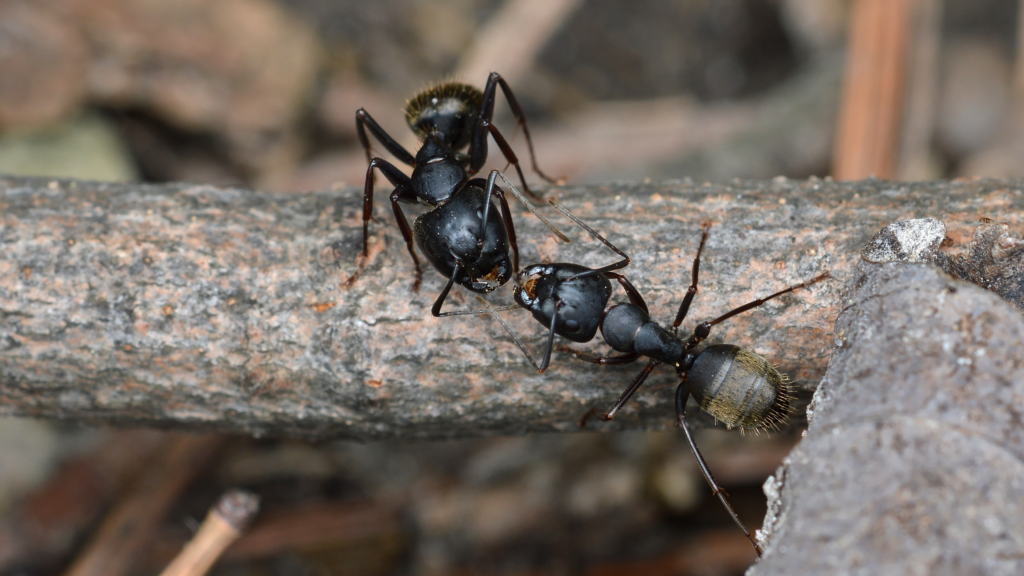
The Life Cycle and Habits of Carpenter Ants
Understanding the life cycle of carpenter ants is crucial for effective pest control in South Carolina. Carpenter ants are social insects that live in colonies, and their life cycle and habits are complex and fascinating.
Colony Development and Structure
Carpenter ant colonies are started by a single queen ant, which is responsible for laying eggs. The queen ant is typically larger than the worker ants and has a more elongated body. The colony develops as the queen lays eggs, which hatch into larvae and eventually become worker ants.
Worker ants are responsible for foraging, caring for young, and maintaining the colony’s structure. They are sterile and cannot lay eggs. As the colony grows, it may produce winged males and females, which are responsible for mating and starting new colonies.
Seasonal Activity Patterns in South Carolina
In South Carolina, carpenter ant activity varies by season. During the spring and summer, carpenter ants are more active as they forage for food and establish new colonies. In the fall and winter, their activity decreases, but they may still be present in homes, particularly in areas with moisture.
Understanding these seasonal patterns is essential for effective carpenter ant control. Homeowners can take steps to prevent infestations by sealing entry points, removing moisture sources, and using targeted treatments during peak activity periods.
Warning Signs of a Carpenter Ant Infestation
Homeowners in South Carolina should be aware of the warning signs that indicate a carpenter ant infestation. Carpenter ants can cause significant damage to homes if left unchecked, making early detection crucial.
Early Detection: What to Look For
Several key indicators can signal a carpenter ant infestation. These include frass deposits, which are piles of sawdust-like material that carpenter ants produce as they excavate wood.
Audible sounds, such as rustling or tapping noises coming from within walls, can also be a sign. Visible ant trails, particularly in areas with high moisture, are another indicator.
Furthermore, inspecting for wood damage, such as hollowed-out sounding wood or visible tunnels, is essential.
Common Nesting Sites in South Carolina Homes
Carpenter ants often nest in areas that provide moisture and protection. Common nesting sites in South Carolina homes include damp or rotting wood, tree stumps near the house, and areas around leaky pipes or faucets.
They can also be found in insulation, attics, and crawl spaces, especially if these areas are not well-maintained or are prone to moisture issues.
Structural Damage Caused by Carpenter Ants
Carpenter ants pose a substantial threat to the integrity of wood structures in homes across South Carolina. These ants are known for excavating wood to create nests, which can lead to significant structural damage over time.
How Carpenter Ants Damage Wood Structures
Carpenter ants damage wood structures by tunneling through the wood to create galleries for their nests. This process involves removing wood fibers, which compromises the structural integrity of the affected wood. The ants prefer moist or damaged wood, making areas with water leaks or high humidity particularly vulnerable.
The excavation process not only weakens the wood but also creates pathways for moisture to enter, further deteriorating the wood. As the ant colony grows, the extent of the damage escalates, potentially leading to significant structural issues within a home.
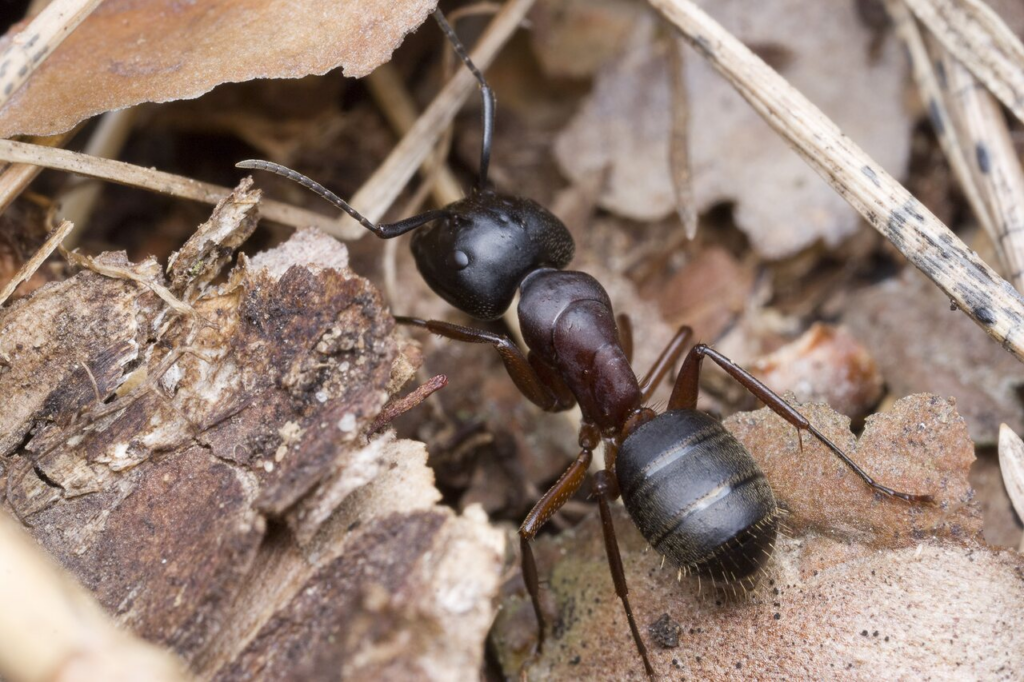
Long-term Consequences for South Carolina Homeowners
If left unchecked, carpenter ant infestations can have severe long-term consequences for homeowners in South Carolina. The structural damage caused by these ants can lead to costly repairs, as compromised wood may need to be replaced to ensure the safety and stability of the structure.
Furthermore, the presence of carpenter ants can also decrease a property’s value. Homeowners may face challenges when selling their property if there is a history of carpenter ant infestation, as potential buyers may be deterred by the associated risks and potential repair costs.
In addition to the financial implications, there is also the risk of safety hazards. Weakened structures can pose a risk to occupants, particularly in cases where the damage is extensive. Therefore, it is crucial for homeowners to address carpenter ant infestations promptly to mitigate these risks.
DIY Methods to Control Carpenter Ants
Homeowners in South Carolina often seek DIY methods to control carpenter ants, but it’s crucial to understand the effectiveness and limitations of these approaches. Carpenter ant infestations can be challenging to manage, and while DIY methods can offer relief, they may not always provide a long-term solution.
Natural and Chemical Treatment Options
Several DIY methods are available for controlling carpenter ants, including natural and chemical treatments. Natural treatments often involve using substances like cinnamon, cayenne pepper, or citrus essential oils to deter ants. These methods are generally safer for homes with pets and children but may not be as effective in severe infestations.
Chemical treatments, on the other hand, can be more potent and include the use of baits or sprays containing insecticides. These can be effective but require careful application to avoid exposure to humans and pets. It’s also important to identify and address the source of the infestation for any treatment to be successful.
Limitations of DIY Approaches
While DIY methods can provide temporary relief, they often fall short in fully addressing carpenter ant infestations. One of the main limitations is the difficulty in locating and treating the nest directly, as carpenter ants can establish colonies in hard-to-reach areas within structures.
Furthermore, DIY treatments may not prevent re-infestation if the underlying conditions that attracted the ants are not addressed. For persistent or large-scale infestations, seeking professional pest control services may be necessary to effectively manage the problem and prevent future occurrences.
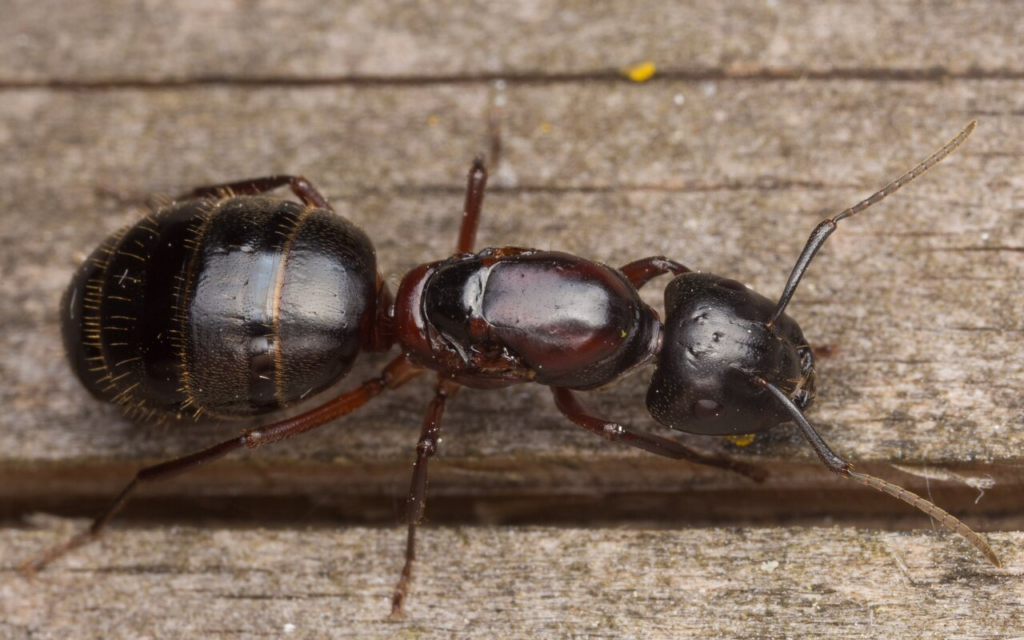
Professional Carpenter Ant Extermination Services
Carpenter ant infestations can be challenging to eliminate without the help of professional pest control services. These infestations require a comprehensive approach to ensure complete removal and prevention of future occurrences.
Benefits of Professional Treatment
Professional carpenter ant extermination services offer several benefits, including expertise, advanced equipment, and effective treatment options. Professionals can identify the source of the infestation, assess the extent of the damage, and apply targeted treatments to eliminate the colony.
Moreover, professional services can provide long-term solutions, reducing the likelihood of re-infestation. They also offer guidance on preventive measures, helping homeowners maintain a carpenter ant-free environment.
Advanced Techniques Used by Experts
Pest control experts employ advanced techniques and technologies to treat carpenter ant infestations. These may include baiting systems, targeted spraying, and the use of specialized equipment to reach hidden areas where carpenter ants often nest.
Advanced techniques ensure that the treatment is effective, minimizing the risk of residual infestations. Professionals stay updated with the latest methods and products, ensuring that homeowners receive the most effective solutions available.
Vinx Pest Control: Expert Carpenter Ant Solutions
With a commitment to protecting homes, Vinx Pest Control delivers comprehensive carpenter ant solutions in South Carolina and West Virginia. Their expertise is crucial in addressing the complex issues associated with carpenter ant infestations.
Comprehensive Treatment Process
Vinx Pest Control’s approach to managing carpenter ant infestations involves a thorough inspection to identify the source and extent of the problem. Following this, a tailored treatment plan is developed to effectively eliminate the carpenter ant colony.
The treatment process includes both natural and chemical methods, ensuring that the solution is appropriate for the specific infestation and the homeowner’s preferences. This comprehensive approach not only addresses the immediate issue but also provides guidance on preventing future infestations.
Serving South Carolina and West Virginia Communities
Vinx Pest Control’s service area encompasses a wide range of communities across South Carolina and West Virginia, making them a reliable choice for homeowners in these regions. Their technicians are well-versed in the local carpenter ant species and the regional factors that contribute to infestations.
By choosing Vinx Pest Control, homeowners can benefit from a localized understanding and a personalized service that caters to their specific needs. The company’s commitment to serving the community is reflected in their prompt response times and customer-centric approach.

Preventing Future Carpenter Ant Infestations
Carpenter ant infestations can be prevented with the right combination of home upkeep and strategic landscaping decisions. By understanding the habits of carpenter ants and taking proactive measures, homeowners in South Carolina can significantly reduce the risk of infestation.
Home Maintenance Strategies
Maintaining a dry environment is crucial in preventing carpenter ant infestations. This involves ensuring that your home is free from moisture issues, such as leaks under sinks, around windows, and near appliances. Regularly inspect your home for any signs of water damage or condensation.
Sealing entry points is another critical step in home maintenance. Carpenter ants can enter your home through even the smallest cracks and crevices. Seal any openings around pipes, vents, and doors to prevent ants from gaining access to your home.
Landscaping Tips to Deter Carpenter Ants
Landscaping practices can also play a significant role in deterring carpenter ants. Keeping trees and shrubs trimmed back from your home can help reduce the likelihood of ants migrating from these plants to your house. Additionally, removing debris and keeping your yard free of clutter can eliminate potential nesting sites for carpenter ants.
Furthermore, consider the placement of firewood, mulch, and other organic materials away from your home. Carpenter ants are attracted to moist, wooden materials, so keeping these items at a distance can help prevent ants from being drawn to your home.
Carpenter Ants and Other Wood-Destroying Pests in the Southeast
Wood-destroying pests are a significant concern in the Southeast, with carpenter ants being just one of the many threats to homeowners. The region’s warm and humid climate creates an ideal environment for various wood-destroying insects to thrive, causing substantial damage to homes and structures.
Common Wood-Destroying Insects in South Carolina
Besides carpenter ants, other common wood-destroying insects in South Carolina include termites, beetles, and carpenter bees. Termites are a significant threat, causing millions of dollars in damage each year. Beetles, such as the old house borer and the powderpost beetle, also cause significant damage to wood structures. Carpenter bees, while not typically as destructive as termites or carpenter ants, can still cause damage by boring holes into wood.
These insects can be particularly problematic in South Carolina due to the state’s climate and geography. The warm and humid summers provide ideal conditions for these pests to thrive.
Integrated Pest Management Approaches
To effectively manage wood-destroying pests, integrated pest management (IPM) approaches are essential. IPM involves a combination of techniques, including inspections, identification of pest species, and the use of a variety of control methods. This can include sealing entry points, removing infested wood, and using chemical treatments as needed.
Pest management services that specialize in IPM can provide homeowners with comprehensive solutions to protect their homes from wood-destroying pests. By taking a proactive and multi-faceted approach, homeowners can reduce the risk of damage and ensure their homes remain safe and secure.
Health Concerns Related to Carpenter Ants
Carpenter ants, though not typically considered a significant health risk, can still impact human and pet health. Their presence in homes can lead to various issues, particularly for individuals with allergies or weakened immune systems.
Potential Risks to Humans and Pets
Carpenter ants can contaminate food and surfaces, potentially spreading bacteria and other pathogens. While they do not directly transmit diseases like some other pests, their foraging activities can compromise household hygiene. For pets, carpenter ants can be a nuisance, and in rare cases, ant bites or stings may cause allergic reactions.
The risk is generally higher in cases of severe infestations, where the number of ants in the home increases significantly. It’s essential for homeowners to be aware of these risks and take proactive measures to prevent carpenter ant infestations.
When Carpenter Ants Become a Health Hazard
Carpenter ants become a more significant health concern when their infestation is severe or when they are present in sensitive areas, such as near food preparation surfaces or in areas where pets and children play. In such cases, the potential for contamination and allergic reactions increases.
Homeowners should be vigilant and address carpenter ant infestations promptly to mitigate these risks. Regular inspections and maintaining a clean, dry environment can help prevent carpenter ants from becoming a health hazard.
Why South Carolina Homeowners Choose Vinx Pest Control
In the battle against carpenter ants, South Carolina homeowners rely on Vinx Pest Control for our expertise and customer satisfaction guarantee. Our commitment to delivering effective solutions has established us as a trusted name in the pest control industry.
Our Guarantee and Customer Satisfaction
At Vinx Pest Control, we stand behind the quality of our work with a comprehensive guarantee. Our goal is to ensure that our customers are completely satisfied with the results of our carpenter ant control services. We achieve this through a combination of effective treatment methods, expert technicians, and a customer-centric approach that prioritizes your needs and concerns.
Our commitment to customer satisfaction is unwavering, and we continuously work to improve our services to meet the evolving needs of homeowners in South Carolina.

Free Inspections and Estimates Across Our Service Areas
Understanding the importance of prompt and effective action against carpenter ant infestations, Vinx Pest Control offers free inspections and estimates to homeowners across our service areas. Our expert technicians will conduct a thorough assessment of your property to identify the extent of the infestation and recommend the most appropriate treatment plan.
This no-obligation service allows homeowners to make informed decisions about their carpenter ant control needs without incurring any upfront costs.
Conclusion: Protecting Your Home from Carpenter Ants
Protecting your home from carpenter ants requires a combination of prevention, early detection, and effective treatment. By understanding the threat posed by these pests and taking proactive steps, homeowners in South Carolina can safeguard their properties against significant damage.
Quite often, home remedies will only work temporarily and you will likely see the pesky ants return. So, many homeowners choose to bypass these less effective home solutions and contact their local pest control experts. When it comes to pest control in the Dallas area, the experienced team at Vinx Pest Control are the ones to call. We guarantee your satisfaction or
we’ll keep servicing until you are completely satisfied. Our team of professionals is knowledgeable and skilled at every service we provide. Contact us today for a free quote and we can begin developing a specific treatment plan for your property.
Click here to see pricing.



